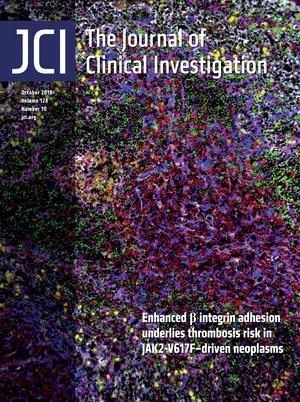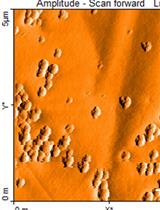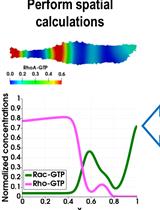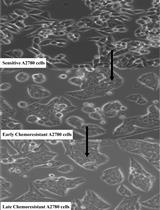- EN - English
- CN - 中文
Visualization of Macropinocytosis in Prostate Fibroblasts
前列腺成纤维细胞中巨胞饮的可视检测
发布: 2019年05月20日第9卷第10期 DOI: 10.21769/BioProtoc.3235 浏览次数: 6821
评审: Mauro Sbroggio'Anonymous reviewer(s)
Abstract
Macropinocytosis has emerged as an important mechanism for non-selective route to internalize extracellular fluids and dissolved molecules in eukaryotic cell. As fundamental cellular behavior, macropinocytosis plays specific and distinct roles in many physiological and pathological processes, such as nutrients uptake, antigen presentation, pathogen capture, and tumorigenesis. It supports tumorigenesis by providing metabolic needs to dividing cells in Ras driven cancer. In recent years, macropinocytosis has gained considerable interest in physiology and various diseases, including cancer, neurodegenerative diseases and atherosclerosis, which in turn has led to the discovery of new endocytic recycling systems. Approaches to assess macropinocytosis will provide insight into its underlying regulatory molecular mechanisms and enable the physiological control of macropinocytosis for controlled drug delivery and targeted cancer therapy. Macropinocytosis is an important phenomenon in Ras-expressing cancer cells and, recently, we have revealed a functional role for macropinocytosis in cancer associated fibroblasts (CAFs) fueling cancer cell growth. Here, we describe a protocol for detection of macropinocytosis in prostatic fibroblasts in vitro by utilizing fluorescently-labeled, lysine-fixable, 70 kDa high molecular weight dextran. Macropinosomes are visualized as fluorescent intracellular puncta either by confocal or fluorescent microscopy. To follow, subsequent intracellular events and their underlying mechanisms after macropinosomes formation, we perform co-localization of quenched BSA (DQTM-BSA) along with dextran labeling in cancer associated fibroblasts. Our protocol provides a consistent way to understand macropinocytosis in wild type or genetic manipulated prostatic fibroblast.
Keywords: Macropinosomes (巨胞饮)Background
Macropinocytosis or ‘cell drinking’ is a type of endocytosis that involves the nonspecific uptake of extracellular fluid into large intracellular vesicles known as macropinosomes (Swanson and Watts, 1995). The macropinosomes are heterogeneous in size and shape, with their diameters ranging between 0.2 and 5 micrometers (Lim and Gleeson, 2011). The Src and Ras are prominent oncogenes which stimulate macropinocytosis in various type of cancer (Bar-Sagi and Feramisco, 1986). Macropinocytosis has been prominently described in pancreatic cancer cells, recognized for having active Ras signaling (Commisso et al., 2013; Davidson et al., 2017). We determined that epigenetic activation of Ras signaling mediates macropinocytosis in prostatic cancer associated fibroblasts resulting in albumin uptake, lysosomal degradation, and release of constituent amino acids (Mishra et al., 2018). These amino acids, predominantly glutamine, were found to support the metabolism and differentiation of the prostate cancer epithelial cells. Therefore, macropinocytosis is an important nutrient processing pathway to support the energetic needs of cancer associated fibroblasts (CAFs) and may represent a predictive biomarker for cancer therapy. The quantification of macropinocytosis can be achieved through confocal laser scanning microscopy.
Materials and Reagents
- Pipette tips (Fisher Scientific, catalog number: 02707404)
- Sterile 10 ml serological pipette (Santa Cruz Biotechnology Inc., catalog number: sc-200281)
- Sterile 15 ml conical tubes (BD Falcon, catalog number: 669993)
- 12-well cell culture plate (Fisher Scientific, catalog number: 64976)
- Cover glass (Fisher Scientific, catalog number: 22050221)
- Aluminum foil (Fisher healthcare, catalog number: 01213101)
- Kimwipe (lint-free paper towel; Fisher healthcare, catalog number: S47299)
- Human prostatic fibroblasts and RasV12 (Mishra et al., 2018)
Note: These cell types have active Ras activity compared to their normal counterpart. - Fetal Bovine Serum (Atlanta Biologicals, catalog number: S11550)
- DMEM/F12 medium (Fisher Scientific, catalog number: SH300404)
- Tetramethylrhodamine-conjugated high molecular weight dextran (TMR-dextran, 75 kDa), lysine fixable (Invitrogen Molecular Probes, catalog number: D1818)
- DQ-BSA (Thermo Fisher Scientific, InvitrogenTM, catalog number: D12050)
- LysoTracker® Green DND-26 (Life Technologies, catalog number: L7526)
- 5-(N-ethyl-N-isopropyl) amiloride (EIPA) (Invitrogen Molecular Probes, catalog number: e-3111)
- Vectashield Antifade Mounting Medium with DAPI (Vector Laboratories, catalog number: H-1200)
- Formaldehyde solution, ACS reagent grade, 37% (vol/vol) (Sigma, catalog number: 252549)
- NuSerum (Fisher Scientific, catalog number: 355500)
- Insulin, human recombinant, zinc solution (Invitrogen, catalog number: 12585-014)
- Sodium chloride (NaCl) (Fisher Biosciences, catalog number: BP358-1)
- Dimethyl sulfoxide (DMSO) (Fisher Biosciences, catalog number: D128-1)
- Sodium dihydrogen phosphate (NaH2PO4) (Fisher Biosciences, catalog number: ICN19550080)
- Sodium Phosphate, Dibasic, Anhydrous, Na2HPO4 (Fisher Biosciences, catalog number: AC424375000)
- 10-8 M testosterone (Nacalai Tesque, catalog number: 32811-61)
- Poly-L-Lysine (Sigma, catalog number: P4707)
- EIPA (5-(N-ethyl-N-isopropyl) amiloride) (Sigma, catalog number: A3085)
- Sterile distilled water
- Stromal complete medium (see Recipes)
- PBS 1x, pH 7.4 (see Recipes)
- Dextran stock solution (see Recipes)
- EIPA stock solution (see Recipes)
- LysoTracker green DND-26 (see Recipes)
- DQ-Green BSA stock solution (see Recipes)
- Dextran cell culture incubation medium (see Recipes)
- Fixation buffer (see Recipes)
Equipment
- Pipette-aid
- Tissue culture hood
- Centrifuge with adaptors for 15 ml conical tubes
- Humidified cell culture incubator set to 37 °C and 5% CO2
- Confocal Laser Scanning Microscope (Leica, Germany)
- Fine-point forceps
- 4 °C refrigerator
- -20 °C refrigerator
Procedure
文章信息
版权信息
© 2019 The Authors; exclusive licensee Bio-protocol LLC.
如何引用
Mishra, R. and Bhowmick, N. A. (2019). Visualization of Macropinocytosis in Prostate Fibroblasts. Bio-protocol 9(10): e3235. DOI: 10.21769/BioProtoc.3235.
分类
癌症生物学 > 癌症生物化学 > 耐药性
您对这篇实验方法有问题吗?
在此处发布您的问题,我们将邀请本文作者来回答。同时,我们会将您的问题发布到Bio-protocol Exchange,以便寻求社区成员的帮助。
Share
Bluesky
X
Copy link













